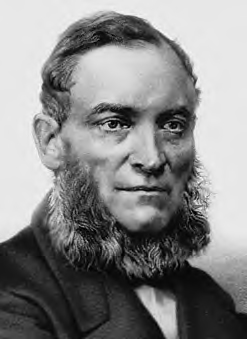Буняковский (Виктор Яковлевич) — знаменитый русский математик, родился 3 декабря 1804 г. в местечке Баре Подольской губернии, где отец его, родом из Малороссии, состоял на службе подполковником конно-польского уланского полка. Умер 30 ноября 1889 г.
Первоначальное образование Буняковский получил в Москве, в доме графа А.П. Тормасова , друга его отца, умершего уже в 1809 г., а затем в 1820 г. был отправлен, вместе с сыном графа, за границу, где он пробыл 7 лет; сначала жил в Кобурге, где брал частные уроки, затем слушал лекции в лозаннской академии; последние же два года провел в Париже, слушая в Сорбонне и College de France лекции таких знаменитых ученых, как Лаплас, Фурье, Пуассон, Коши, Лежандр, Ампер и другие. В течение 1824 г. Буняковский получил степени бакалавра и лиценциата, а 19 мая 1825 г., по публичной защите диссертации, состоявшей из двух работ: одной - по аналитической механике, а другой - по математической физике, удостоен был парижским факультетом наук (Faculte des sciences) степени доктора математики.
Приехав в Петербург, Буняковский занялся педагогической деятельностью, сначала (1826-1831) был преподавателем математики в 1-м кадетском корпусе, затем (1827-1864) в офицерских классах морского ведомства; с 1846-1859 г. читал лекции в Петербургском университете по аналитической механике, дифференциальному и интегральному исчислениям и по теории вероятностей. Некоторое время Буняковский был профессором математики в Горном институте и в Институте путей сообщения. В 1828 г. Буняковский был избран Академией Наук адъюнктом по чистой математике, через два года - экстраординарным академиком, а в 1836 г. получил звание ординарного академика; с 1864 г. был вице-президентом Академии Наук; это звание Буняковский оставил лишь за несколько месяцев до своей кончины.
Обширна и плодотворна была ученая деятельность Буняковского. Список сочинений Буняковского ("Liste des travaux mathematiques de Victor Bouniakowsky etc." СПб., 1883), им самим составленный, содержит 108 названий. Преимущественно Буняковский работал над теорией чисел и теорией вероятностей. Его сочинение "Основания математической теории вероятностей" (СПб., 1846) представляет особенно ценный вклад в науку; оно содержит, кроме теории, историю возникновения и развития теории вероятностей и множество приложений ее: к вопросам о человеческой жизни, к вспомогательным кассам и страховым учреждениям, к определению правдоподобия свидетельств и преданий, к задачам судопроизводства, к определению погрешностей при наблюдениях, к вычислению вероятных потерь в войске во время сражений и т. п. До Буняковского было очень мало математических сочинений на русском языке и его "Лексикон чистой и прикладной математики" (1839) содействовал установлению у нас математических терминов и выражений; слова лексикона расположены по французскому алфавиту с переводом на русский язык и с подробным объяснением, по-русски же, значения каждого термина. Словарь этот доведен до буквы Е; по смерти Буняковского в его бумагах найдена рукопись "Наброски для математического лексикона Буняковского, буквы E, F, G, H, I, J, K, L", которая, согласно надписи, сделанной рукою Буняковского: "Не печатать, а передать в архив Академии Наук, как пособие для справок продолжителям моего Математического Лексикона", хранится теперь в отделе рукописей II отделения библиотеки Академии. Наиболее осязательную практическую пользу принесли труды Буняковского, содействовавшие учреждению эмеритальных касс; главные из работ этого рода напечатаны в "Морском Сборнике" (1858).
Высокие заслуги Б. были оценены его современниками и потомками. Б. был почетным членом всех русских университетов и многих ученых обществ; сложив с себя звание вице-президента академии наук, он был провозглашен почетным вице-президентом; при академии наук учреждена премия его имени за лучшие сочинения по математике. Отношение к Б. его современников и признание ими его заслуг лучше всего выразились во время празднования его 50-летнего юбилея.
См. "Описание празднования докторского юбилея вице-президента Императорской Академии Наук, академика, тайного советника В. Я. Буняковского, 19 мая 1875 г." (СПб., 1876).
Словарь Брокгауза и Ефрона (А. Жданов)
